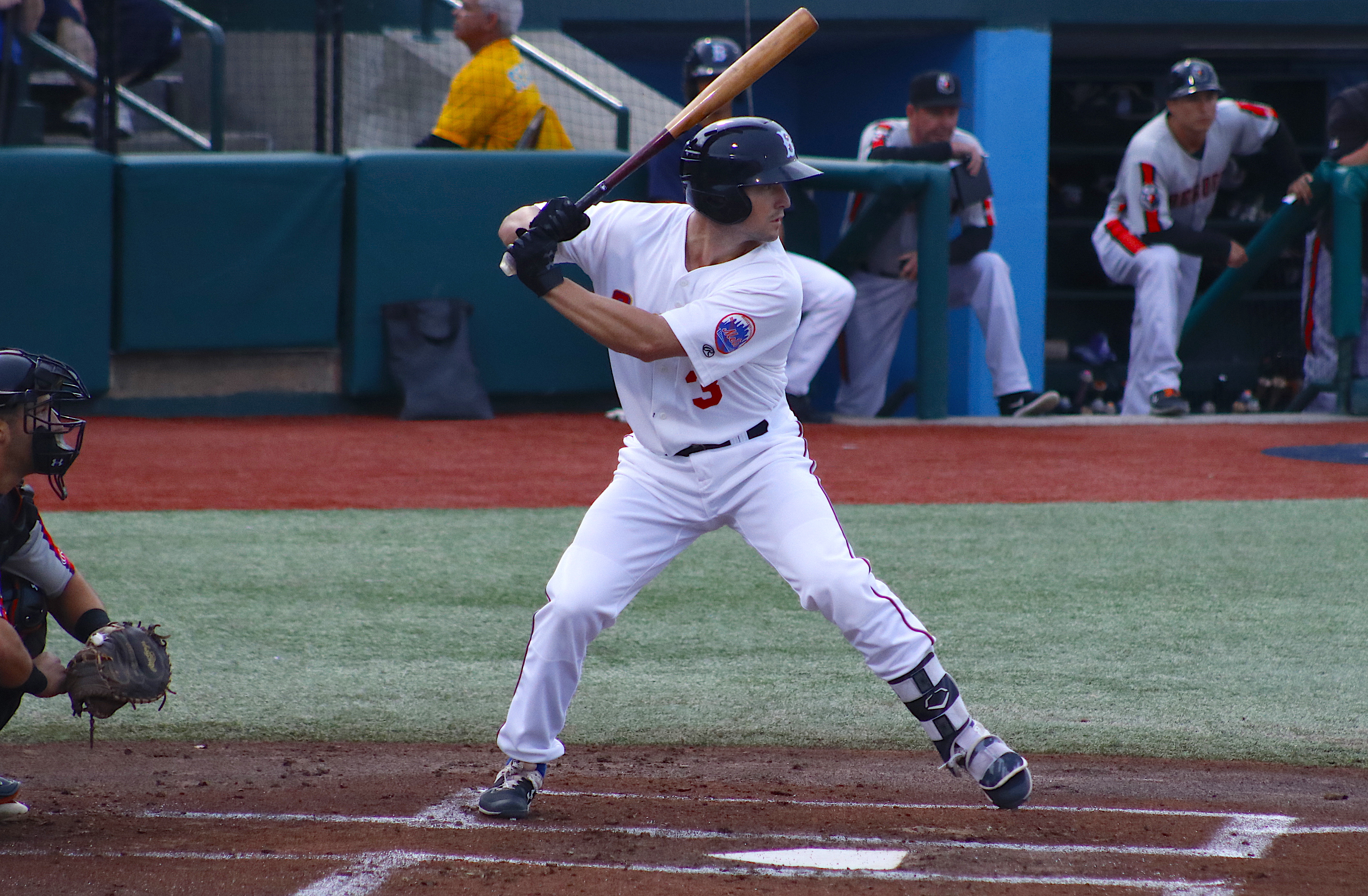
Luke Ritter (Jacob Resnick/Mets Minors)
Luke Ritter, 2B
Ht: 6’0″ Wt: 190 lbs. Age: 2/15/1997 (22)
Bats/Throws: R/R
Round: 7, Pick: 208
School: Wichita State University
Statistics:
- 2015 – 2016 (Freshman) 53 G, .272/.372/.373, 8 2B, 3 HR, 25 RBI, 2 SB
- 2016 – 2017 (Sophomore) 55 G, .223/.348/.349, 5 2B, 2 3B, 4 HR, 20 RBI
- 2017 – 2018 (Junior) 55 G, .341/.420/.484, 12 2B, 3B, 6 HR, 31 RBI, 6 SB
- 2018 – 2019 (Senior) 59 G, .333/.458/.545, 16 2B, 2 3B, 9 HR, 40 RBI, 12 SB
Background
Ritter was a fixture in the middle of the order and the middle of the diamond for Wichita, appearing in 53 games at second and three at shortstop. His offensive production was good enough for him to be named as one of the top 50 college seniors in college baseball by Perfect Game.
After being drafted by the Twins in the 37th round last year, Ritter decided to come back to Wichita State to finish his degree in finance and, he’d continue his offensive breakout in his Senior year besting every career high he had set the previous season. His OPS rose nearly .100 points higher at 1.003, and he hit eight more extra-base hits, including three more home runs.
His decision to return to college led to Ritter rising up 30 rounds in the draft, and he would be one of the 21 collegiate seniors selected by the Mets in the 2019 Draft. Due to his polished offensive profile, he stands as one of the Mets more intriguing drafted players.
Scouting
Ritter has a strong, athletic build despite not being very physically big, which makes him perfectly cut for an infield position. His glove is serviceable if not good, but his arm strength (or lack thereof), Ritter’s most likely future is at second base. In addition to his time at second base in college, Ritter has played short and third, and he even saw time in the outfield as an underclassmen in college.
His best tool is undoubtedly his bat, as evidenced by his strong batting lines as an upperclassmen at Wichita. As a hitter, Ritter stands in a semi-crouched, even stance with his hands quiet and close to his body. Ritter’s stride is a short, calm leg lift into a stiff hand load. Ritter generally has some movement in his bat before his load for rhythm, but quiets his hands down in his load. His swing his quick and short to the baseball and generally has more gap-to-gap than over-the-fence power, but there is enough strength in his small frame and explosiveness on contact to drive the occasional ball into the seats. At 22, it’s unlikely to foresee Ritter adding considerable strength to his frame.
In addition to his power, Ritter has a strong eye at the plate. He’s displayed the ability to maintain a nearly 1-to-1 strikeout-to-walk ratio, which allows him to work deeper into plate appearances and get pitches to hit. When he gets hit pitch, he tends to hit it hard with multiple exit velocities clocked over 100 MPH.
Development
Ritter might not be the most projectable talent, but he is a strong athlete with a polished swing and high levels of success in college. He’s the kind of guy that will need to mash his way through the Mets’ system. And if he hits, he could be a name that moves relatively quickly.
Ritter will get his first taste of pro-ball in Brooklyn as most of the Mets’ advanced college draft picks do. If he passes that test, he could find himself in Columbia in 2020.

